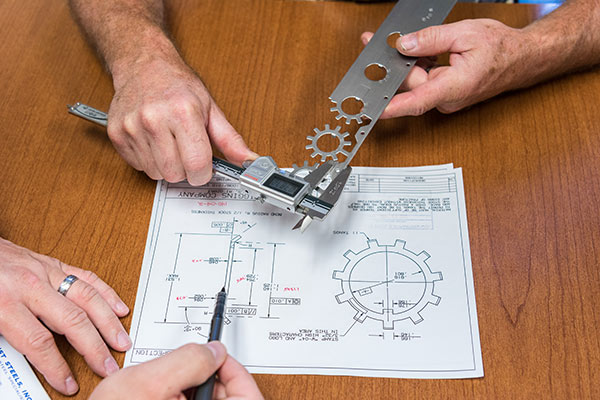In the metal stamping industry, one critical decision that can significantly affect both the financial bottom line and the production outcome is choosing between prototype tooling and permanent hard tooling. This choice not only impacts the initial investment but also the quality, efficiency, and speed of production. Understanding when to invest in each type of tooling is essential for optimizing both costs and operational performance. Here’s a general guideline:
1. Advantages of Prototyping:
Flexibility in Design

Prototyping is particularly advantageous when the design of a stamped part is still in the developmental stages. This flexibility allows for iterative modifications based on real-time testing and feedback, which is invaluable in industries driven by innovation and rapid technological advances.
Cost-Effective for Low Volumes
For small production runs or parts with lower volume requirements, prototyping emerges as the most cost-effective method. It reduces upfront expenses and is ideal in scenarios where the market demand is uncertain or still being evaluated.
Speed to Market
The faster a product can move from the design phase to the market, the better the competitive advantage. Prototyping significantly shortens the product development cycle, allowing companies to launch products faster and adapt to market changes more swiftly.
2. Benefits of Permanent Hard Tooling:
Economies of Scale
When production demands escalate, permanent hard tooling is indispensable. It offers a lower cost per unit when production volumes are high, making it economically viable in the long run. A break-even analysis can help determine the point at which investment in permanent tooling outweighs the initial higher costs.
Superior Quality and Consistency
For industries where precision is paramount, such as automotive or aerospace, permanent hard tooling ensures that each part meets stringent quality standards with consistent repeatability. This section could be enriched with testimonials from industry experts or case studies demonstrating the critical importance of quality in high-stakes environments.
Longevity of Tools
The robust construction of permanent tools allows for extensive use over many years, thereby amortizing the initial investment and reducing the cost impact over time. This long-term perspective is crucial for strategic planning in manufacturing.
3. Considerations:
Cost
Tooling can be expensive, so it’s essential to consider whether the expected production volume justifies the investment.
Lead Time
Prototyping generally requires less time than tooling, making it advantageous for getting products to market quickly.
Design Stability
If the design is likely to change significantly, investing in tooling prematurely could lead to costly modifications or the need to build new tools.
In summary, if there’s uncertainty about the final design, production volume is low, or quick iterations are needed, prototyping is the way to go. On the other hand, if the design is finalized, and production volume justifies the investment, tooling becomes more appropriate for ensuring consistency, efficiency, and cost-effectiveness in long-term production. Whichever solution is right for you, contact Larson Tool & Stamping to ensure your prototyping or hard tooling project is executed with quality front of mind.
About Larson Tool & Stamping Company
Since its inception in 1920 in Attleboro, MA, Larson Tool & Stamping Company has been making a difference as a valued supplier of precision metal stampings and assemblies to hundreds of companies in the United States. Larson provides high-quality, cost-effective solutions with our wide range of capabilities that include forming, stamping, deep drawing, machining, assembly, brazing, coining, and more. Through significant investment in leading-edge manufacturing equipment and the loyal support from customers and co-workers, Larson perpetuates the commitment made by our founders to do whatever is necessary to meet and exceed customer expectations.
What all this translates to is that—whether your next project requires progressive die stamping, deep drawing, in-die assembly, precision machining, or value-added operations—Larson is well-equipped to do the job.
Find out first-hand and contact us now to see for yourself: [email protected]

